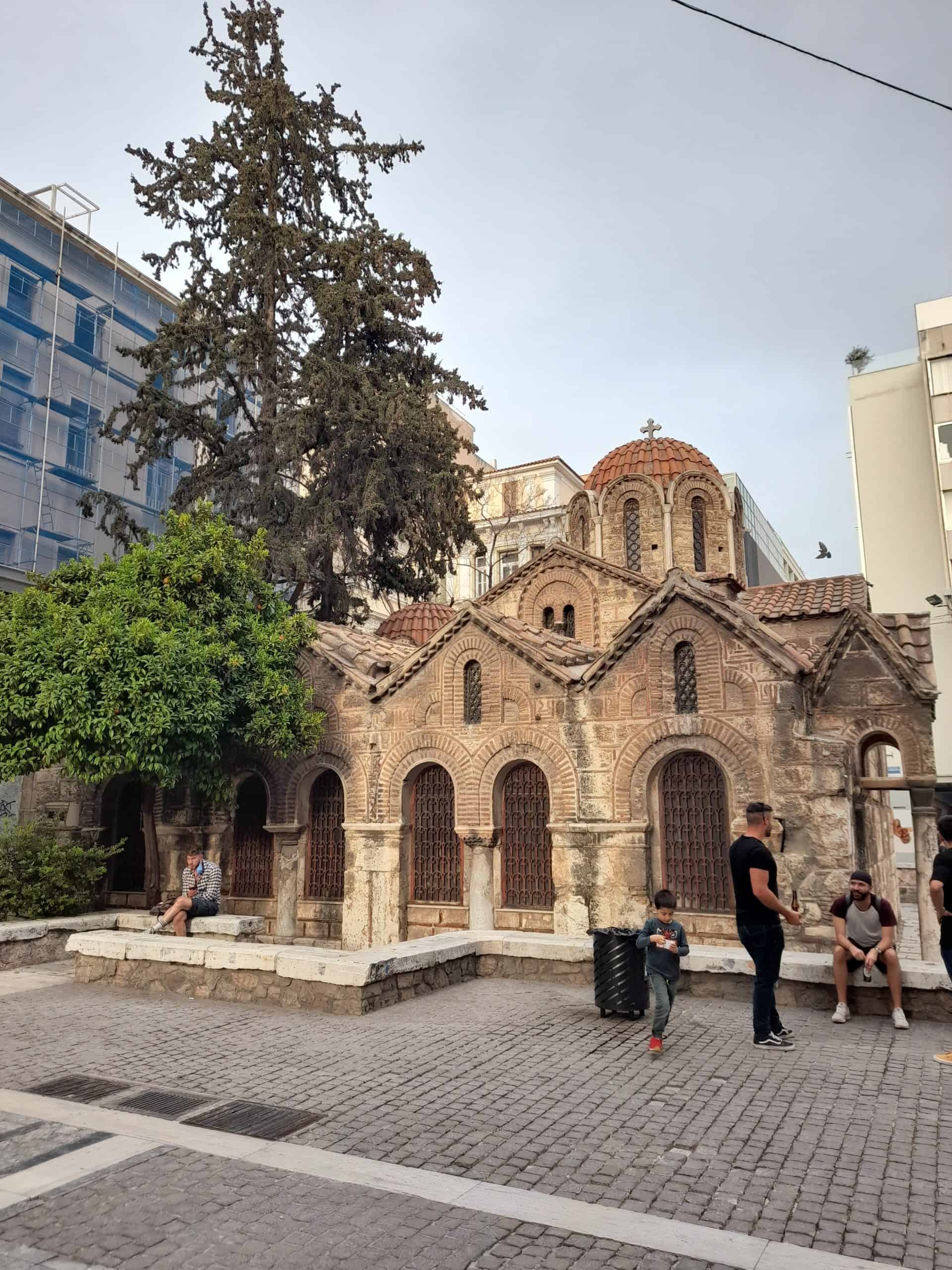Reading facts about Athens, Greece, is an excellent way to get an initial understanding of the history, background, and culture of Greece´s capital city. The Greek capital has a long, fascinating, and tumultuous history.
It also boasts a unique culture and gastronomy that makes it quite unlike elsewhere in Europe. Most people are only aware of the city’s ancient history.
For instance, they know all about the Ancient Acropolis, the Parthenon, and the creation of other notable Athens landmarks. They may have even heard a few stories about Greek philosophers like Socrates and Plato or tales of Greek mythology.
However, as far as more recent Greek history is concerned, very few people are well-informed. Before you visit the city of Athens, one of the oldest cities in the world, it is worth studying some fun facts. Doing so will help you have a little more context into the various historic and archaeological sites you see, and the various Athenian neighborhoods you pass through.
Facts About Athens, Greece
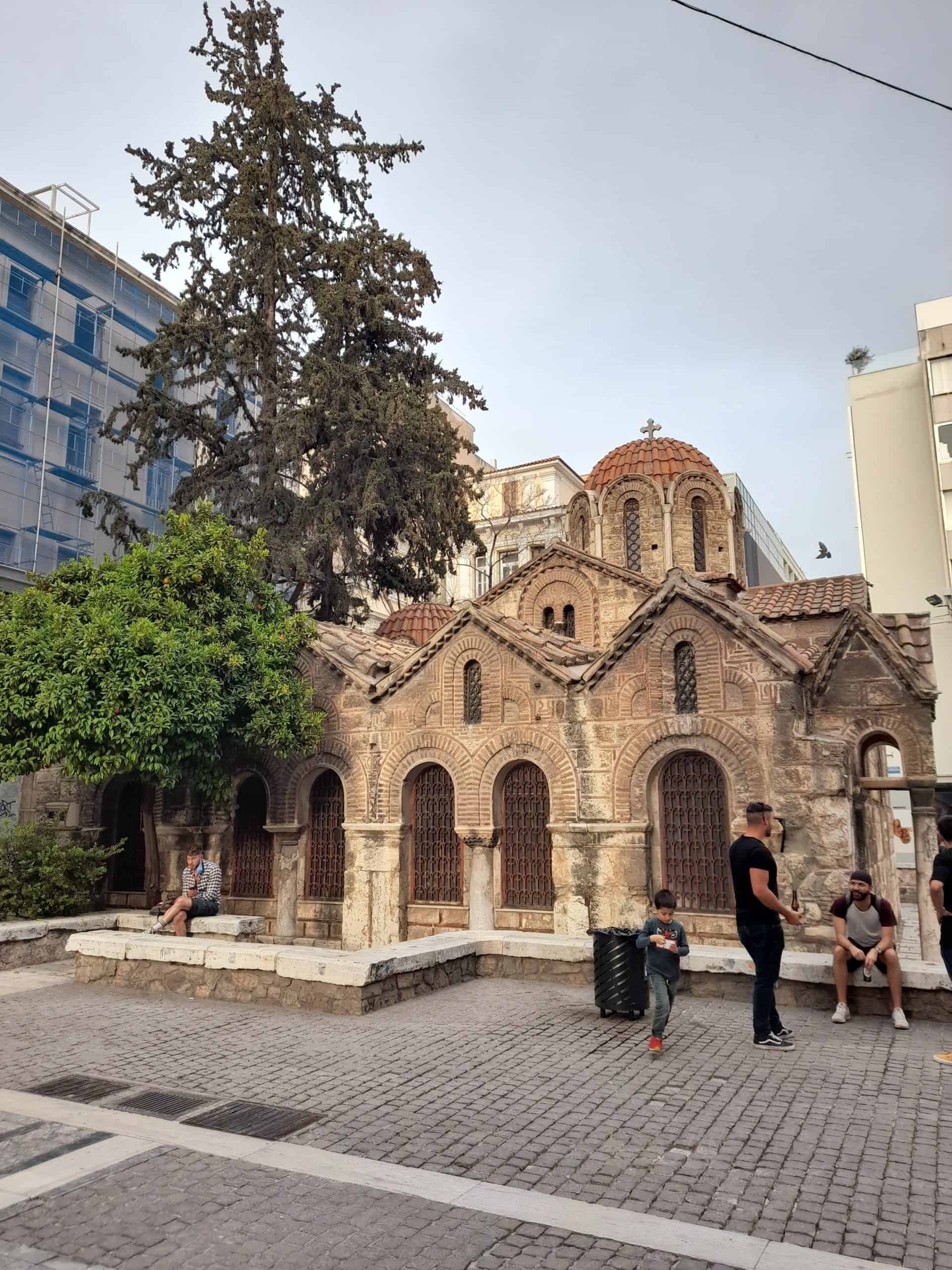
Interested in learning some weird and wonderful facts about Athens, Greece? Chances are, some of the things discussed here are things you never even knew!
The Acropolis was almost a seventh-world wonder
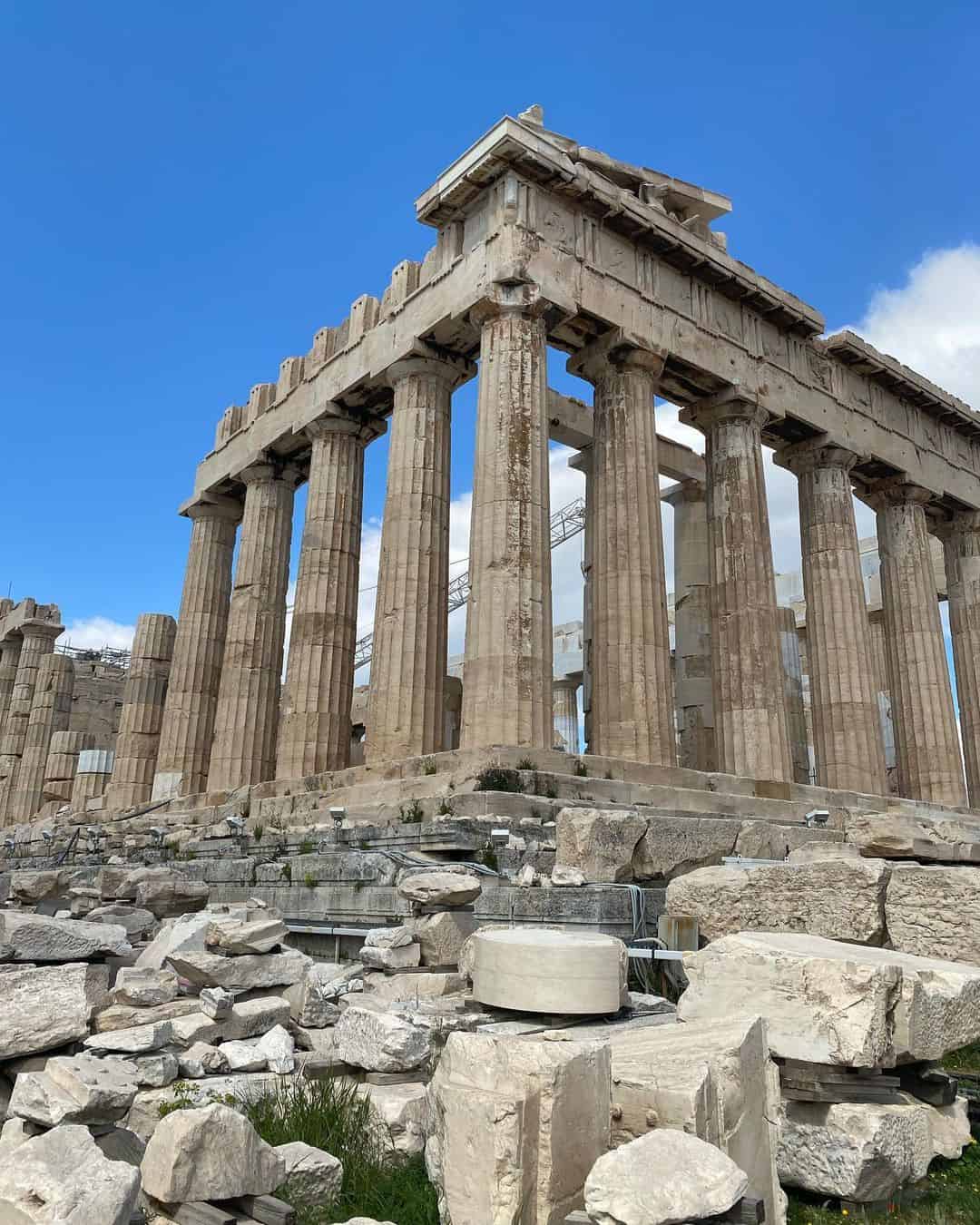
The Ancient Acropolis, with its magnificent sunbleached Parthenon, is arguably the most famous historic site in Athens and, perhaps, all of Greece. The site was recognized as a UNESCO world heritage site in 1987.
It was the second place in Greece to receive UNESCO status and is now one of 18 UNESCO-protected sites in the country. The complex is vast and worthy of several hours of exploration.
The Acropolis dates back to the 5th century BC, with temples, shrines, and crumbling ancient theatres within its grasp. Recently, the Acropolis was a finalist for becoming one of the ¨new¨ seven world wonders, but unfortunately, it just missed the cut.
Athena and Poseidon fought to become the God of Athens
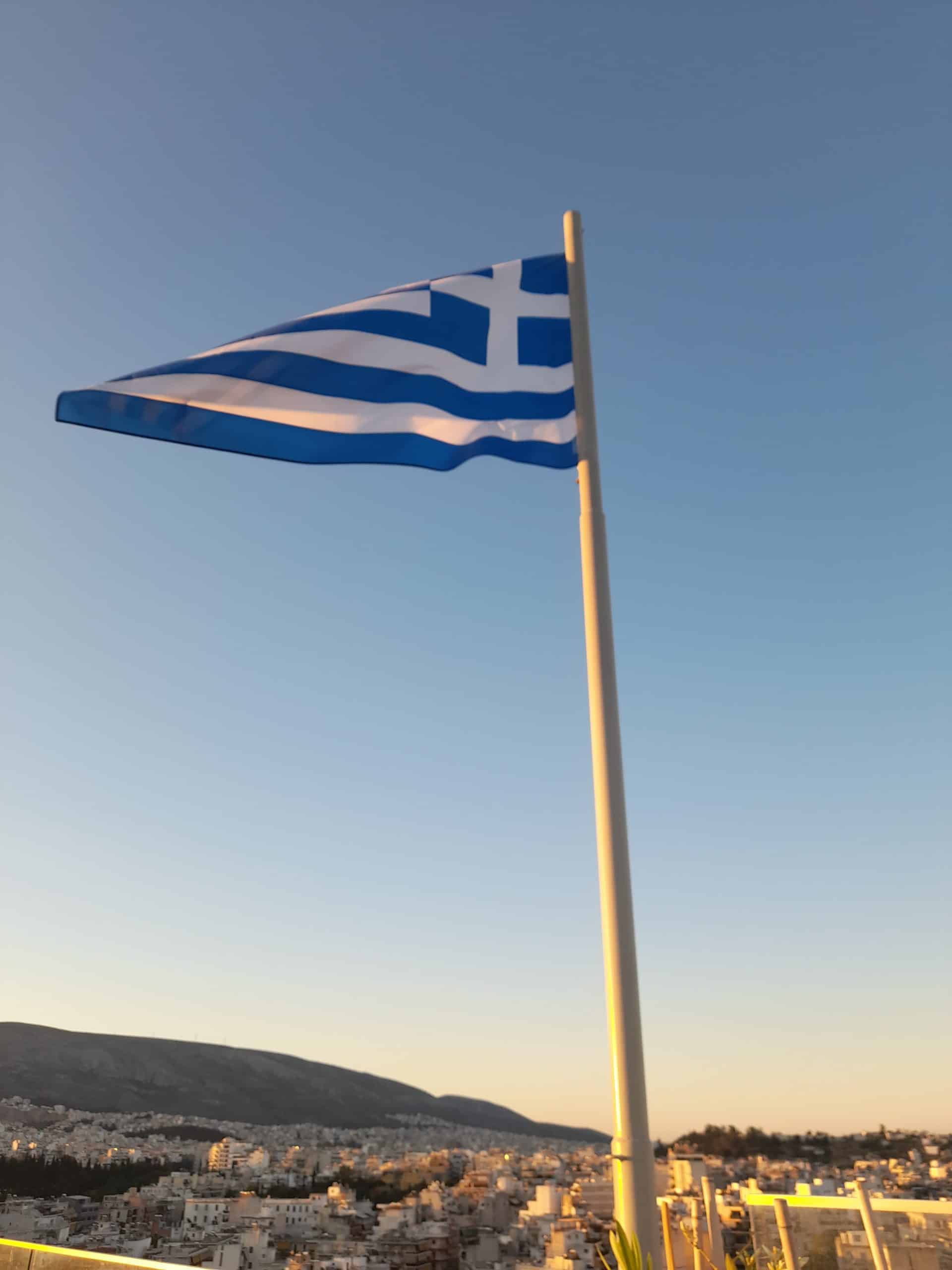
Athens takes its name from its patron Goddess, Athena. Athena was the favourite child of Zeus and the Goddess of knowledge, wisdom, crafts, civilization, and justice.
If you see road signs for the city in Greek, you will see that they say Athena (Αθηνά). But the reality could have been different as Athena and Poseidon (God of the sea) fought to become the patron of Athens!
They said they held a competition near the Erechtheion at the Acropolis. Each God would give the city residents a gift, and then the people could decide who they wanted.
Athena gave the people an olive tree, representing abundance. Poseidon struck the ground with his trident, and a small fountain of salty, undrinkable water sprouted out.
The residents chose Athena, and the rest is history. There is an olive tree near the Erechtheion today and a crack in the floor, which locals joke is from Poseidon’s trident. This is perhaps one of the most exciting facts about Athens if you are interested in Greek mythology!
Democracy was invented at the Pnyx
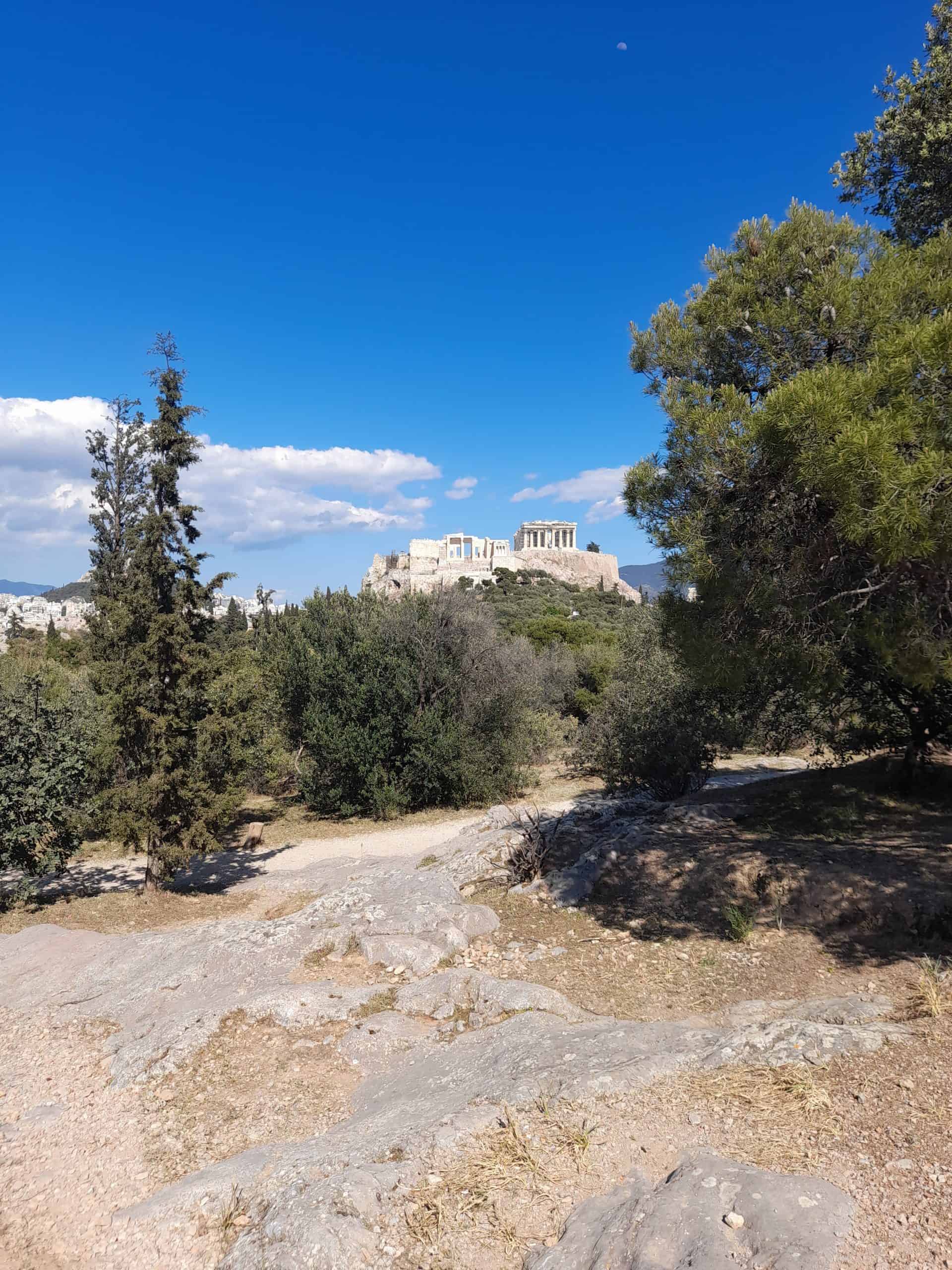
One of the more well-known facts about Athens is that the city was the birthplace of democracy. But few people know specifically where democracy was invented.
It was not the Acropolis nor the Ancient Agora, but a hill called the Pnyx beside Filopappou Hill. This was where the Athenian democratic assembly (ekklesia) would meet and discuss civil matters.
Thousands of local men would meet here to discuss issues in Athens. The word “Pnyx” means ¨place where people are closely packed together¨.
Ekklesia aside, famous Ancient Greek orators such as Demosthenes, Perikles, Aeshines, and Themistocles would give speeches here.
Athens held the first modern Olympics in 1896
The Ancient Olympics were founded in Greece and were held between 776 BC and 393 AD in Olympia. However, the modern Olympic games were reintroduced in 1896.
That’s 1503 years after the originals! The Panathenaic stadium played host to the modern Greek Olympics.
Athens became the Greek capital in 1834
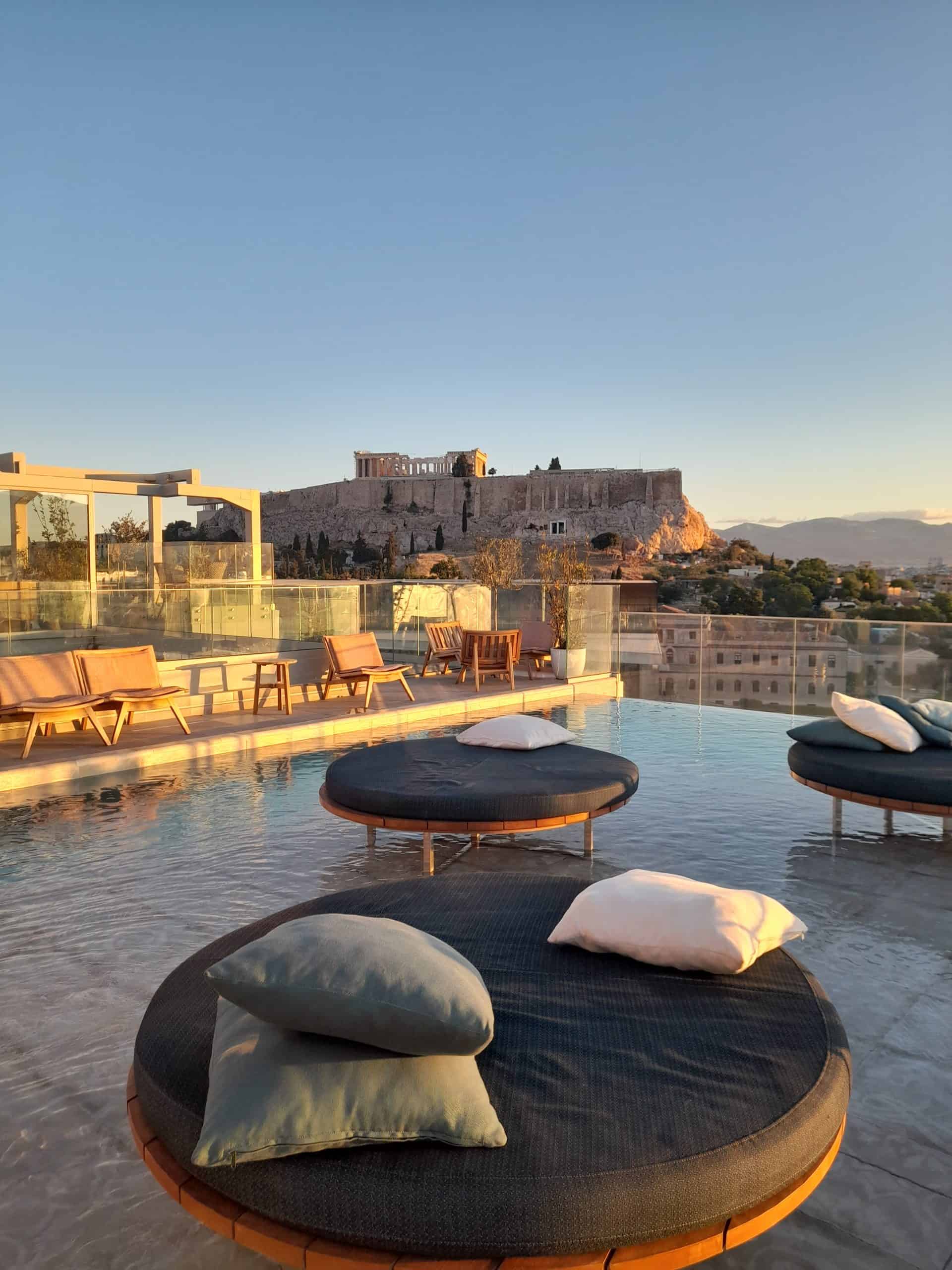
Athens has not always been the Greek capital. In fact, it did not become the capital until 1834, following Greece gaining its independence from the Ottoman Empire.
Prior to that, the charming city of Nafplio in the Peloponnese was the capital of Greece. King Otto chose to make Athens the country’s capital primarily due to historical and cultural reasons.
At that time, Athens, as it stands today, did not exist. For instance, Syntagma Square was commissioned in 1834. Ermou Street was little more than a dirt trail at that time.
Socrates’ prison was not Socrates’ prison
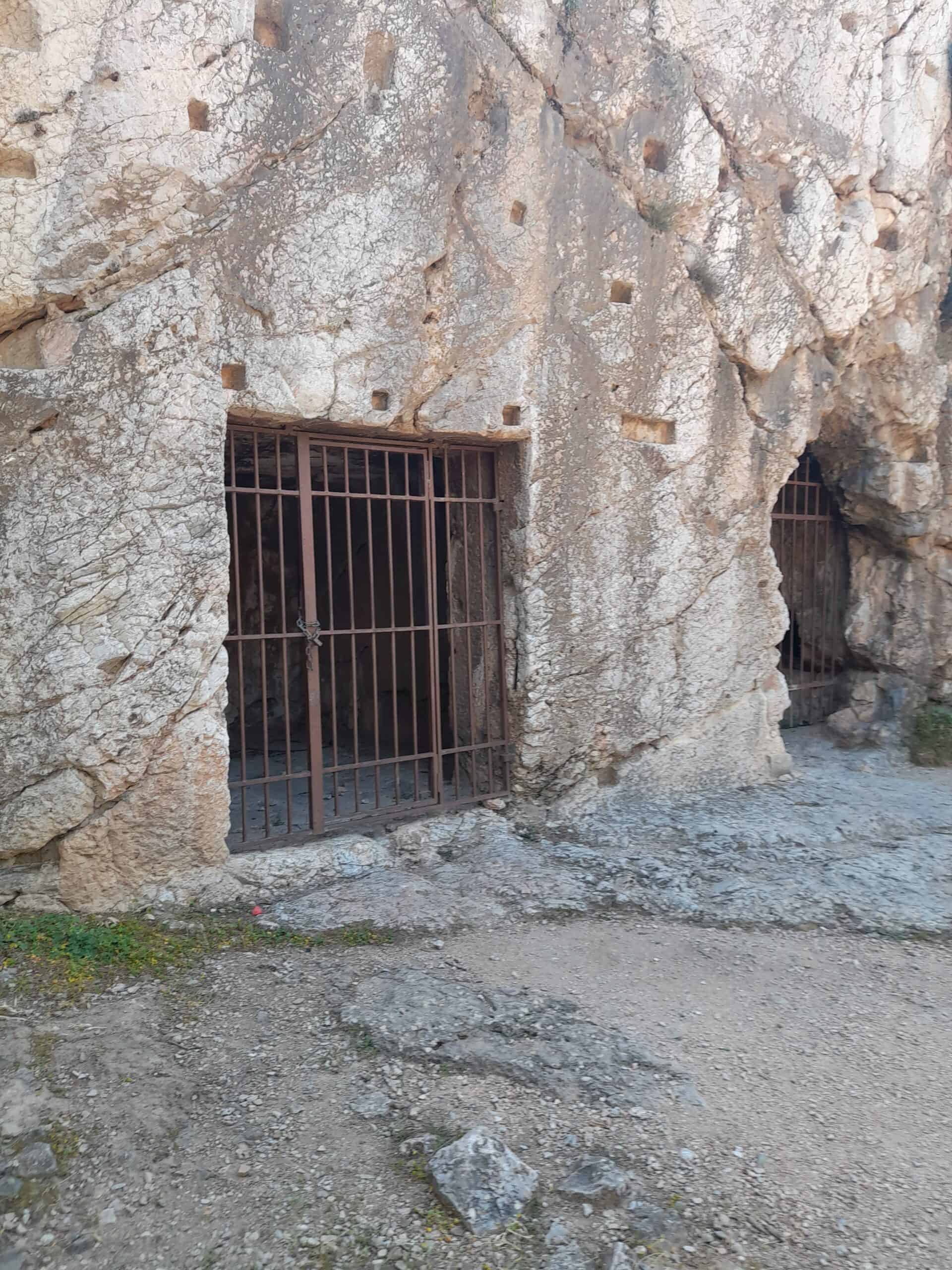
On the grounds of Filopappou Hill, you will find a mysterious, multi-room cavern labeled “Socrates cave”. For a period, it was believed that it was here where philosopher Socrates was imprisoned and eventually died.
Sadly, this theory was disproved, yet the name remains, confusing many tourists who visit Athens. This cave does have some interesting history though. Greeks hid treasures from the Acropolis and the Acropolis Museum here during the second world war to protect from the Germans.
Thissio was named after a temple was misidentified
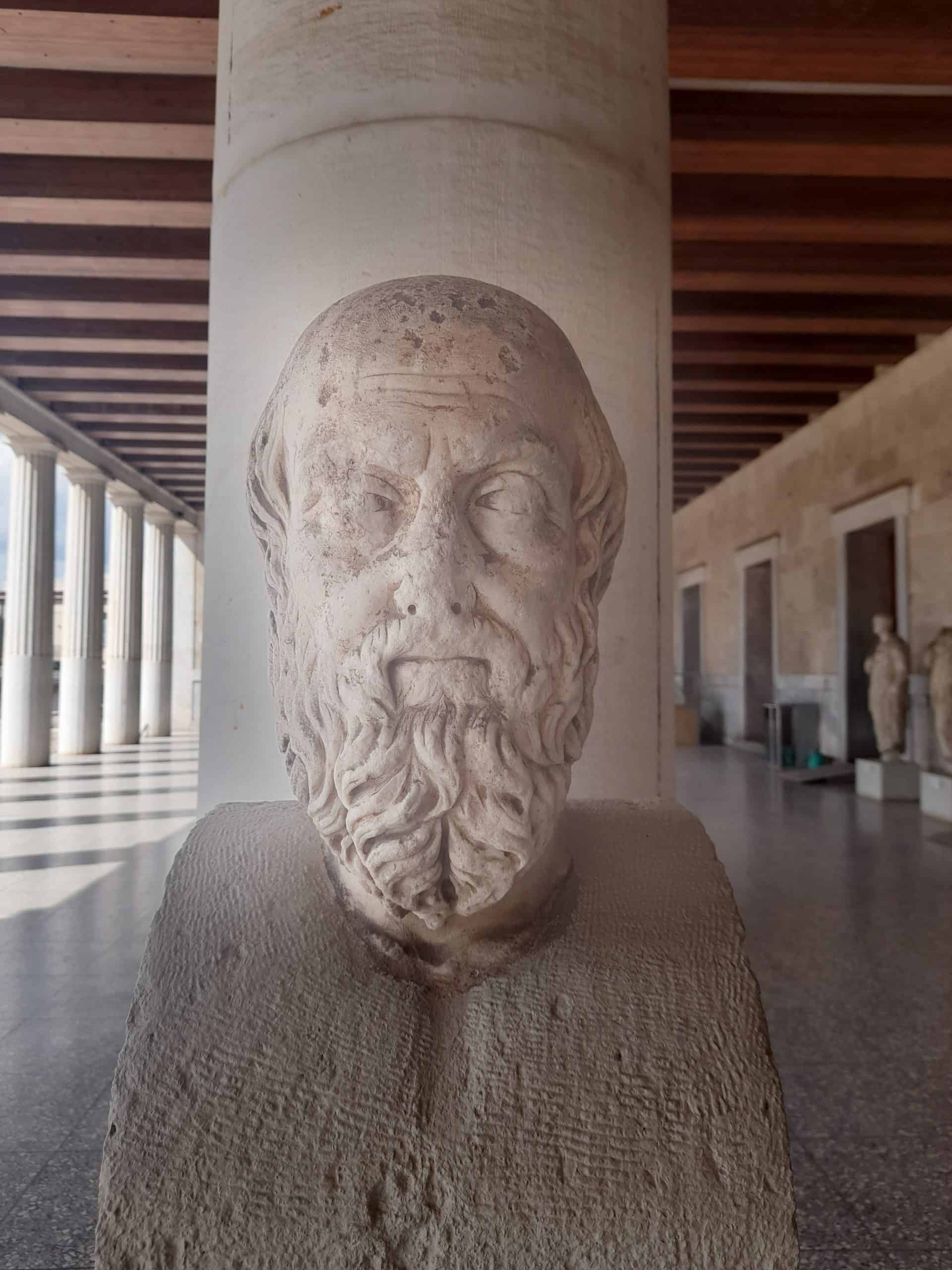
The historic Thissio district awaits in the beating heart of downtown Athens. Many of Athens’ best attractions can be found in this area, including the Ancient Agora and the charming pedestrianised promenade of Apostolou Pavlou.
However, the name “Thissio” comes as a result of an error by historians. When the Temple of Hephaestus was discovered at the Agora complex, it was first (wrongly) believed to be dedicated to Theseus.
Theseus was the son of Poseidon and the founder of Athens. In actuality, the temple was dedicated to Hephaestus, the God of fire, blacksmiths and craftsmen.
Greek Philosophers used to visit the Ancient Agora
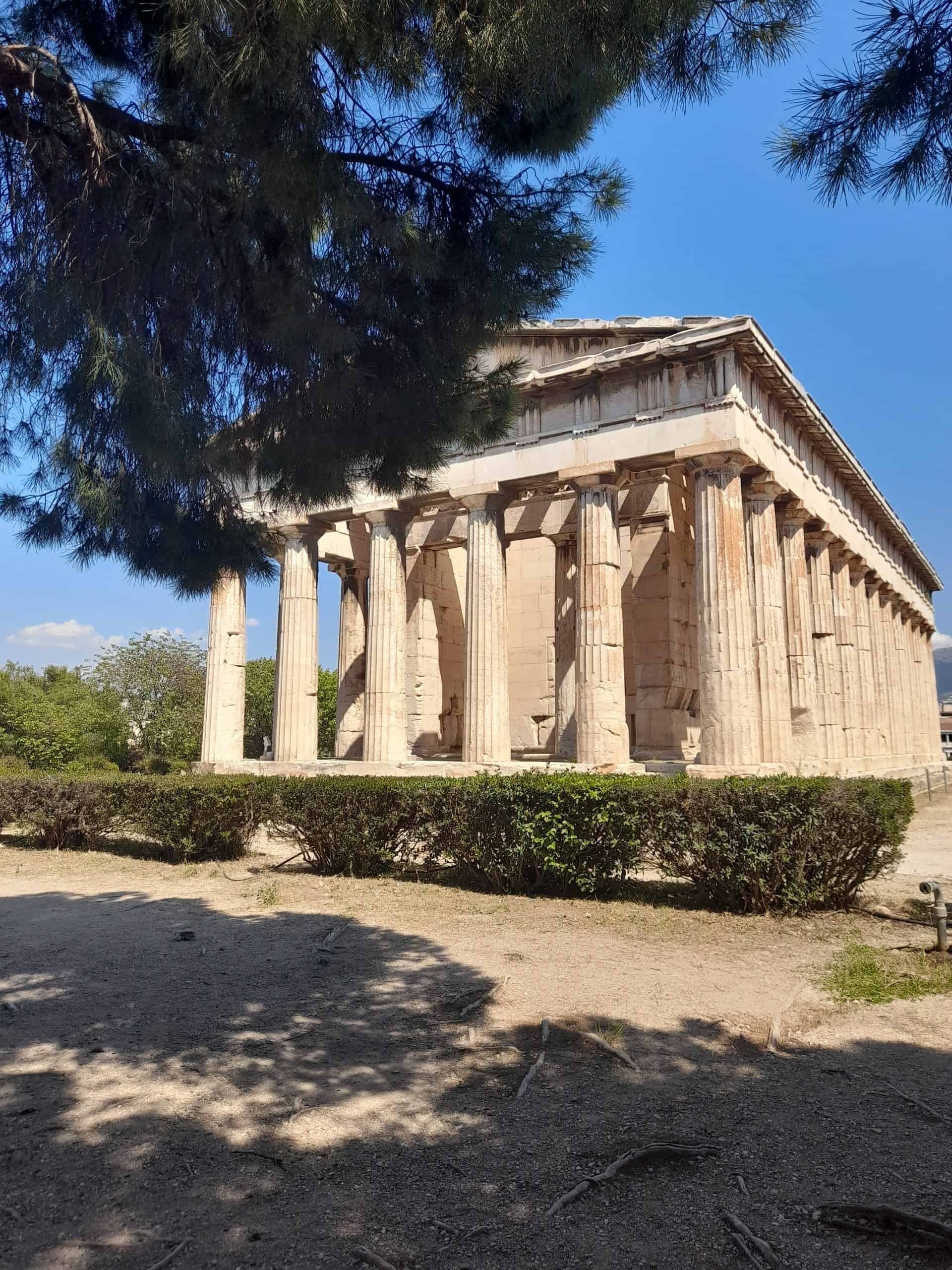
The word “Agora” in Greek means marketplace. This term is still used today.
For instance, Varvakios Agora refers to Athens Central Market where thousands of locals venture each week to buy fresh fruits, vegetables, and meat. However, the purpose of the Ancient Agora was mostly civil.
Speeches would be given in the centre of the Agora site. Greek Philosophers like Socrates would wander around barefoot, sharing theories and discussing ideologies with locals.
Ancient Athens and Sparta were rivals
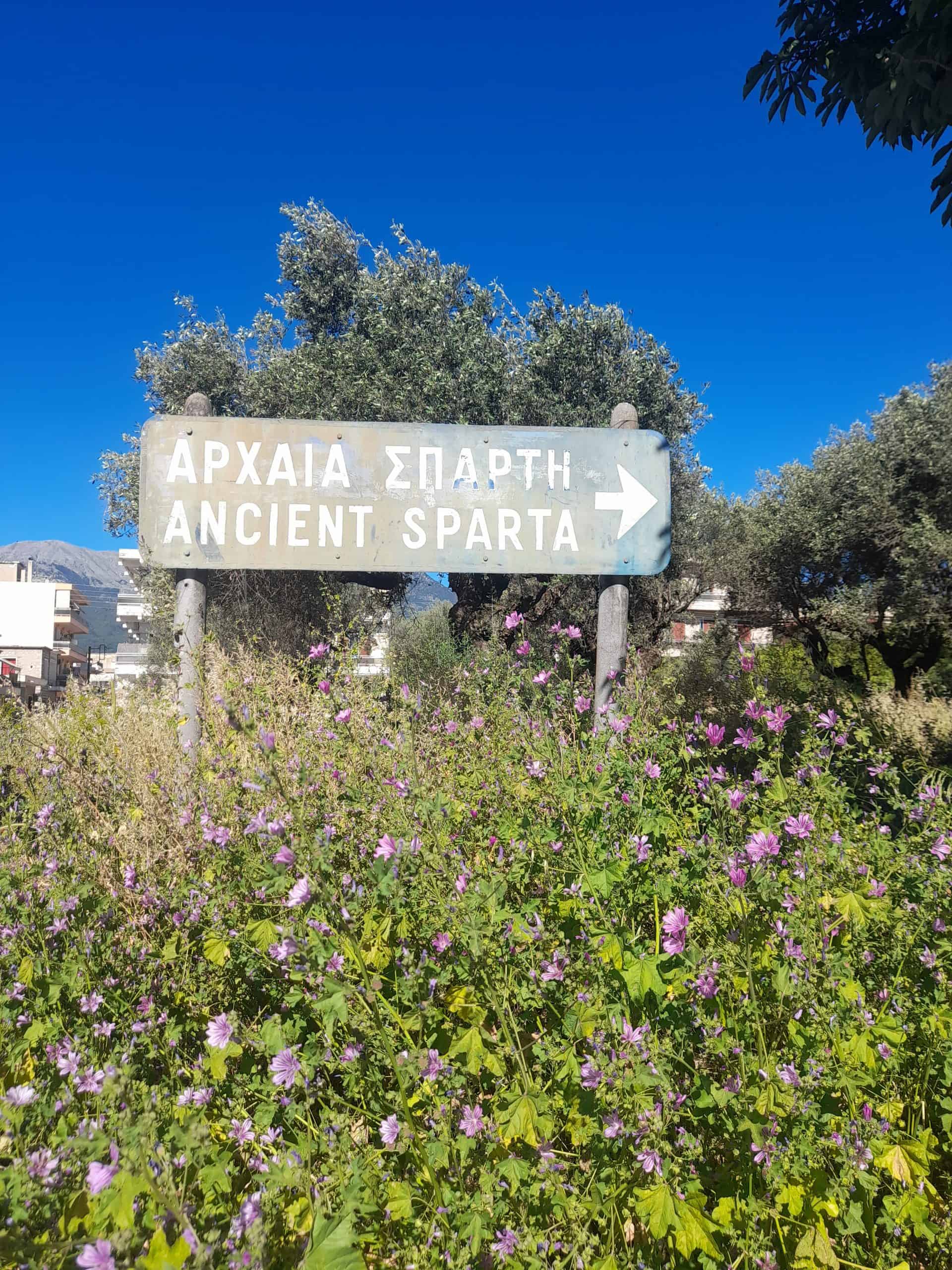
Sparta, Greece, home of the famous King Leonidas is situated 212km away from Athens. It is the capital of the Lakonia region of the Peloponnese.
Sparta and Athens were bitter rivals in Ancient Greece. They had very different cultures and political views.
For instance, Athens was a democracy. Meanwhile, Sparta favored oligarchies and did not believe that ordinary people should have a voice in political matters.
The Great Peloponnesian War was their first major battle. The conflict lasted for 15 years and was, unfortunately not the only one.
Anafiotika is a district that looks just like a Greek island
Anafiotika is a tiny district tucked away from view on the slopes of Acropolis Hill. Most tourists are unaware of its existence and completely miss it from their Athens itinerary.
Anafiotika means “Little Anafi.” It is named as such because most of the district’s residents moved to Athens from Anafi island in the Cyclades.
They relocated to help King Otto in the grand rebuilding of Greece’s new capital city. They built their homes in traditional Cycladic style that reminded them of their home island. There are even some churches and shrines here that are more miniature replicas of what you can see on Anafi.
Many of the Parthenon marbles are not where they should be
Mention the Parthenon marbles to an Athenian at your peril. This is a susceptible topic.
The Parthenon marble that you can see in the “New” Acropolis Museum are replicas rather than the originals. This is because the original marbles are displayed at the British Museum in London.
In 1803, a massive collection of marbles were piled onto ships at Piraeus port and set sail for England. At the time, Greece was under the control of the Ottoman Empire.
Lord Elgin agreed with the then Sultan to take the marbles. However, this is shrouded in controversy, and many believe that they should be returned to their rightful home.
Athens had the highest recorded temperature in Europe
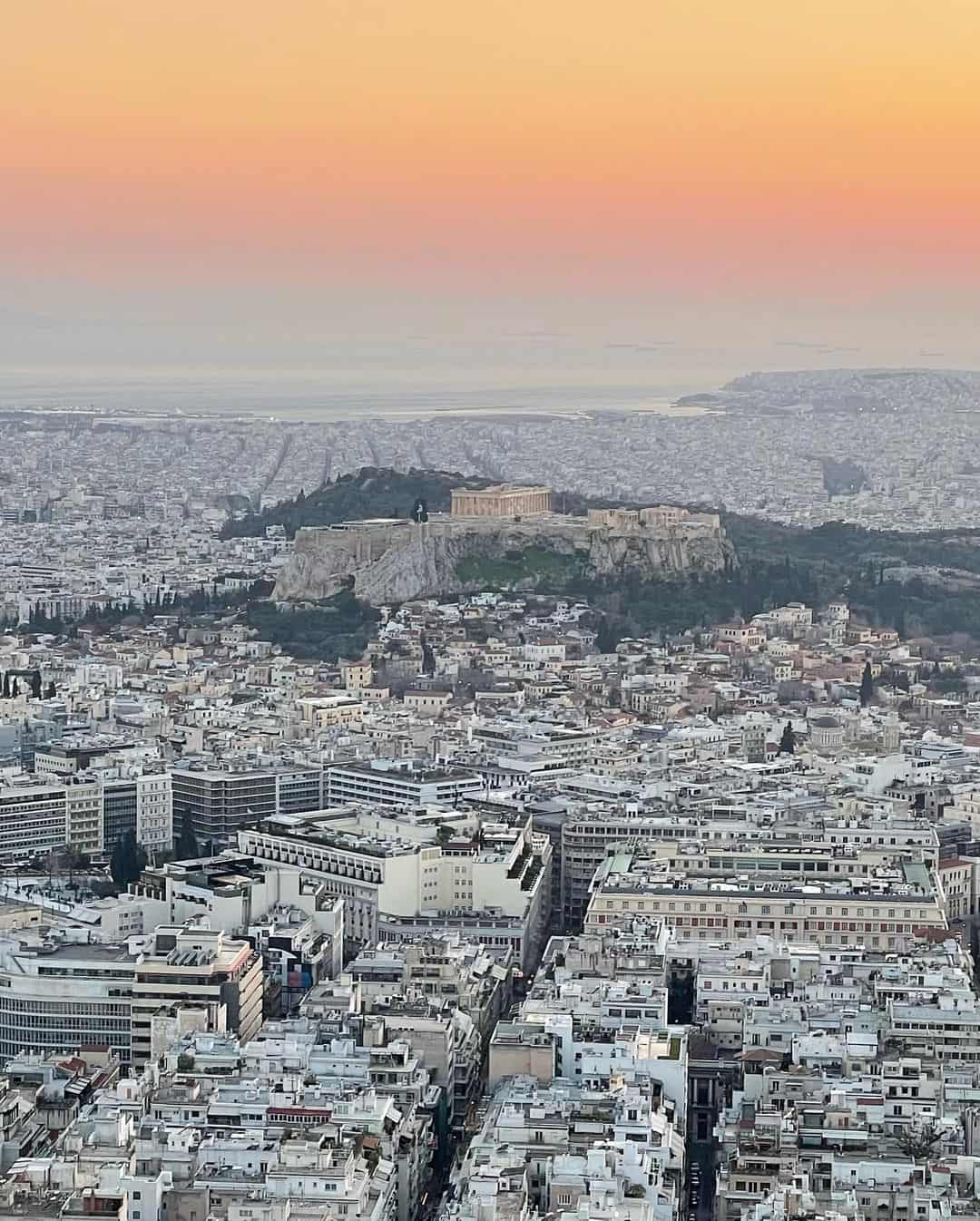
Athens once recorded a daily temperature of 48 degrees Celsius (118.40 degrees Fahrenheit) in 1977. This was the highest-ever recorded temperature in Europe.
This has potentially now been surpassed, although there are no official sources. Some state that the Italian island of Sicily experienced temperatures of 48.5 degrees Celsius during the summer of 2021.
There is a riot in Exarchia every December
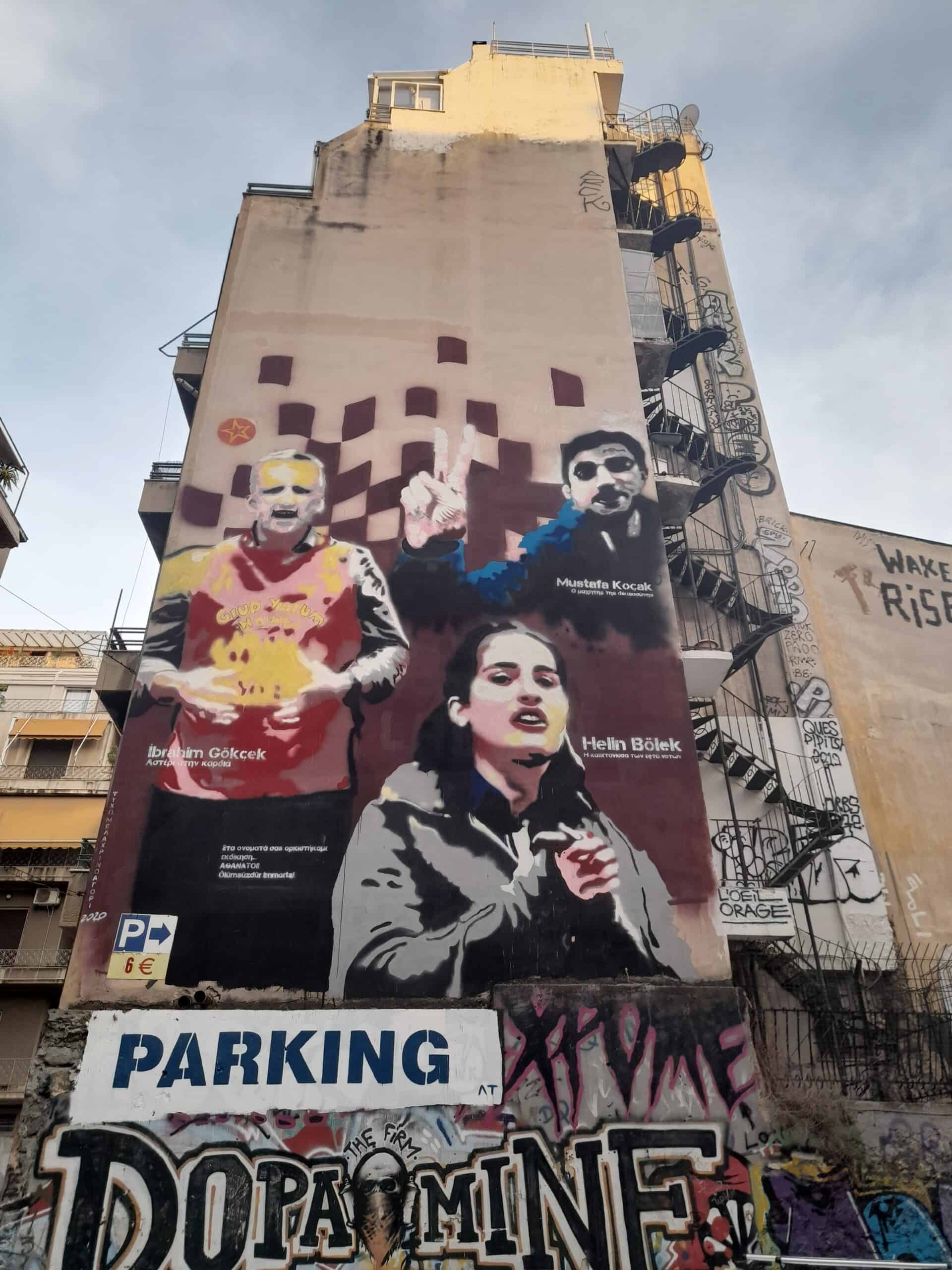
On the 6th December 2008, an Athenian teenager, Alexandros Grigoropoulos was shot and killed by a Greek Police Officer. Greeks already had a mistrust for the Hellenic Police who are renowned for their corruption and brutality.
It took years for the officer in question to be brought to justice. The event triggered riots in Athens and across the country.
Now, on the 6th of December every year, Anarchist groups clash with the Hellenic police in Exarchia and surrounding areas. If you are visiting Greece during this time, you should avoid the city centre on this day.
The Mets district was named after a brewery
The Mets is a sophisticated residential district nestled between Pagrati and Syngrou. You are unlikely to stumble across it during your trip to Athens unless you go out of your way to look for real “local” spots.
There are some great coffee shops, bars, and jazz clubs in the Mets today. Interestingly, the Mets was named after a brewery that once operated here.
The brewery produced one of Greece’s favourite beers: Fix. It was opened by Johann Karl Fuchs. He named it “Mets” and so, this part of town has retained that name ever since.
Koukaki district was named after businessman George Koukakis
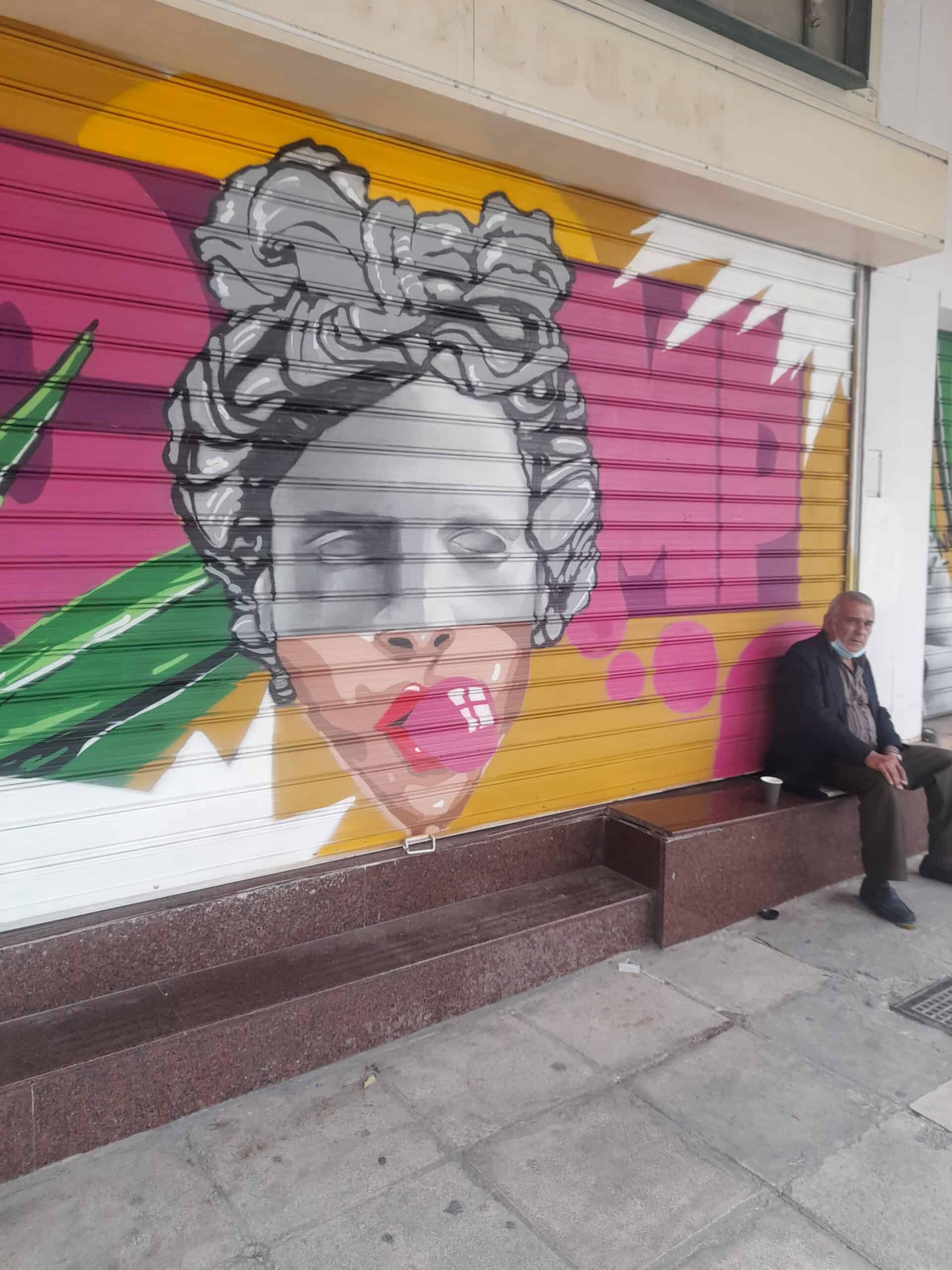
Quirky Koukaki is one of the most popular places to stay in the Greek capital. Not only that but it was also nominated as being one of the best Airbnb neighbourhoods in the world!
Today, its streets are lined with international eateries, art galleries, and eclectic-themed bars. In the 1980s, it was nicknamed “Little Paris” as the area began to emerge as an Athenian cultural hub.
Koukaki’s roots are more industrial, mind you. Many factories and warehouses used to operate in this area.
The neighbourhood takes its name from businessman George Koukakis. He used to run a shop here selling metal beds and mattresses.
Aristotle used to teach here
Aristotle’s Lyceum ( Rigillis 11) is a very badly preserved historic site that can be found close to the Panathenaic Stadium. However, if you have a strong interest in Greek history and philosophy, you may want to stop by briefly.
Aristotle established his own school here. It had an impressive library and lectures were offered to the general public free of charge.
The Caryatids at the Acropolis are replicas!
The Caryatids are the lady sculptures that line the Erechtheion building at the Acropolis. A little-known fact is that these are actually sculptures.
One of the Caryatids was removed by Lord Elgin’s men and now sits in the British Museum, causing as much controversy as the Parthenon marbles. The other five can be found in the “New” Acropolis Museum.
Athens is Europe’s oldest capital
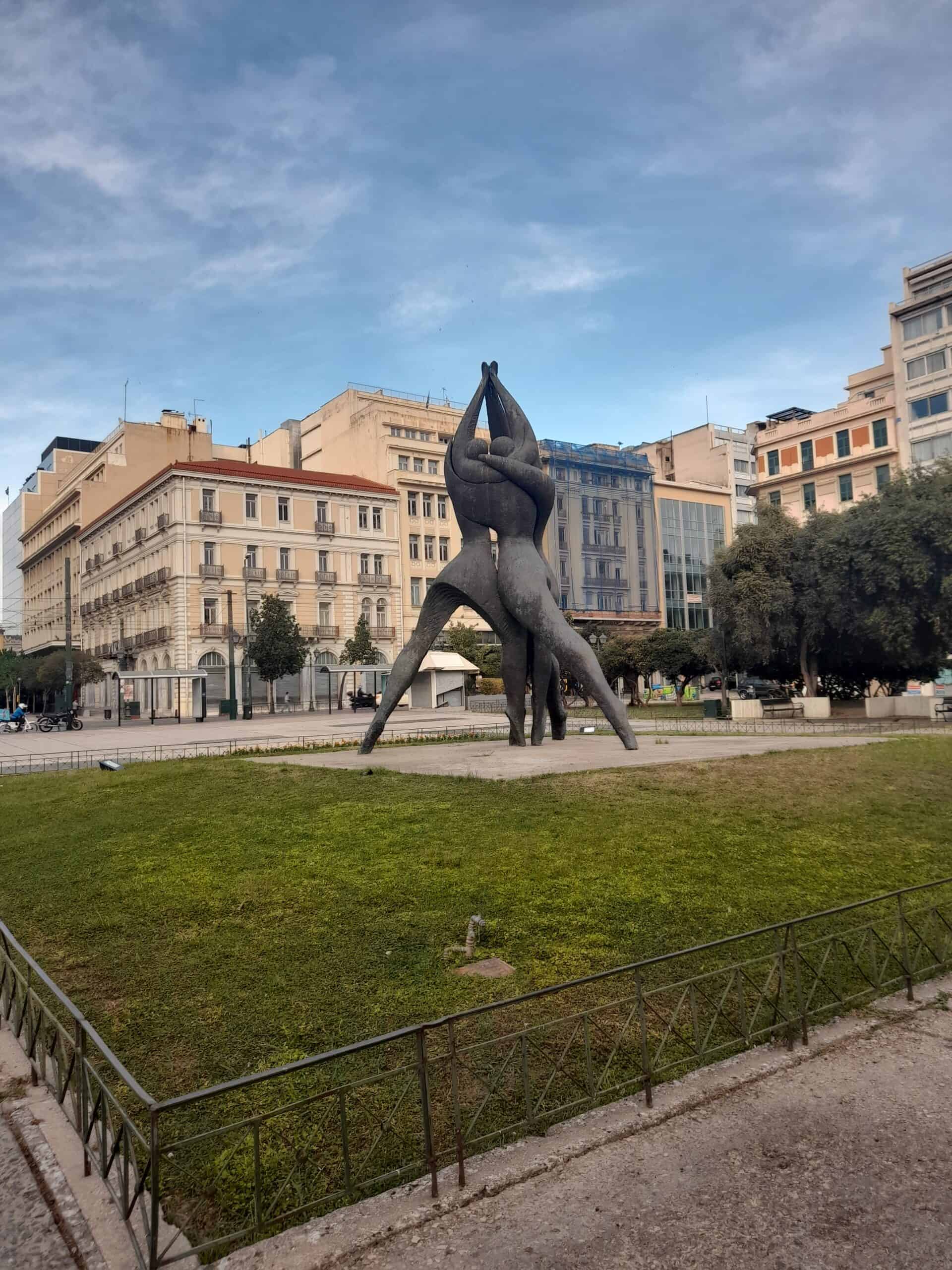
Athens is the oldest city in Europe and one of the oldest in the entire world. Its recorded history dates back 3,400 years.
It is estimated that its earliest inhabitants lived here between the 11th and 7th millennium BC. That predates other European capitals by thousands of years!
Plaka was the Turkish district of Athens
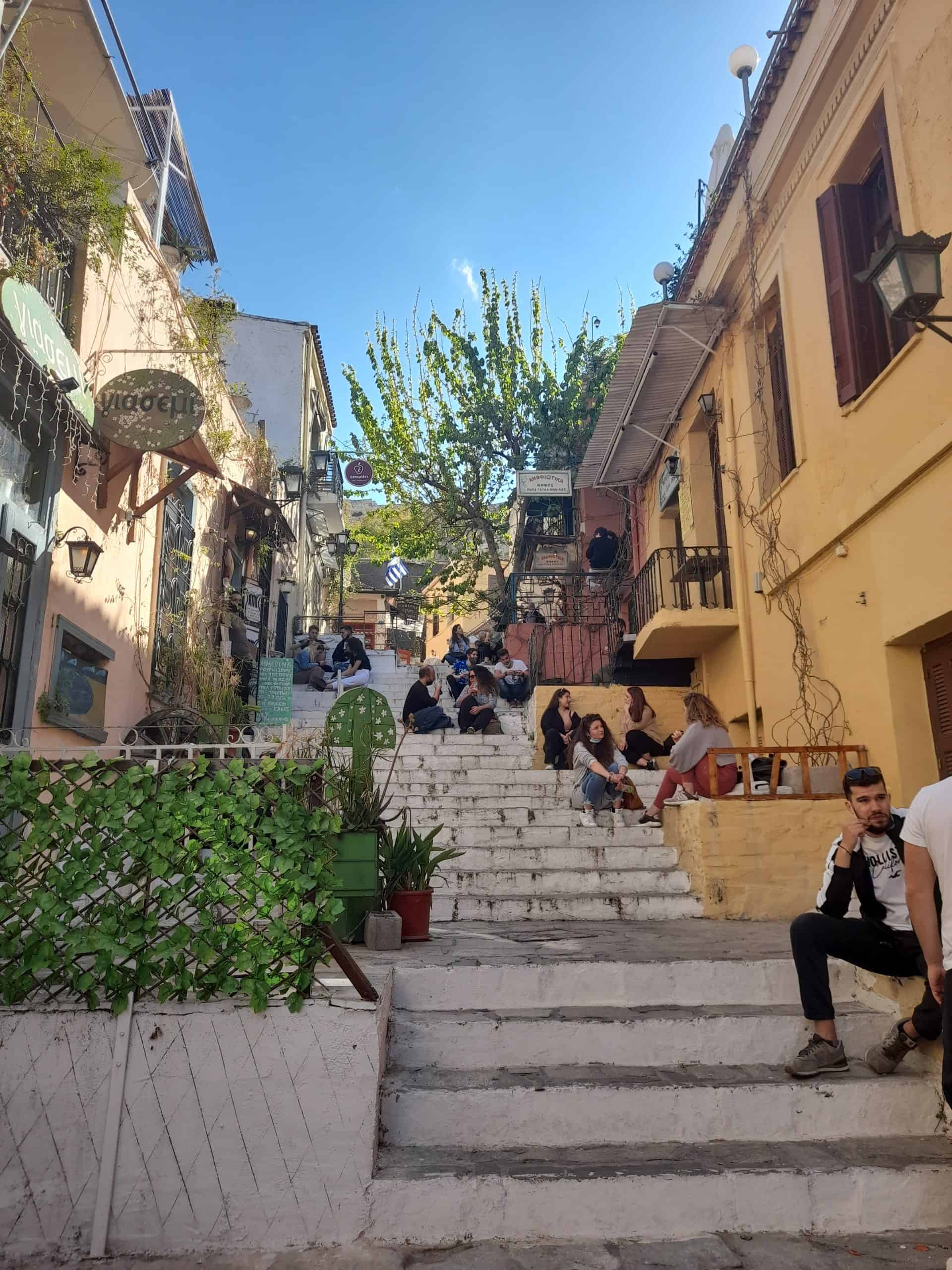
During the Ottoman rule of Greece old Plaka was considered the city’s “Turkish district”. Although a lot has changed in the area since then, there are still a few remnants of the area’s Turkish past.
Fethiye Mosque and Pelopida street madrassah (Islamic school) still stand in the city of Athens. In the days of the Ottoman Empire, Ottomans would visit hammams (Turkish bathhouses) in the Plaka area. If you want to experience this for yourself, you can visit Al Hammam Athens.
Athens is the largest city in Greece
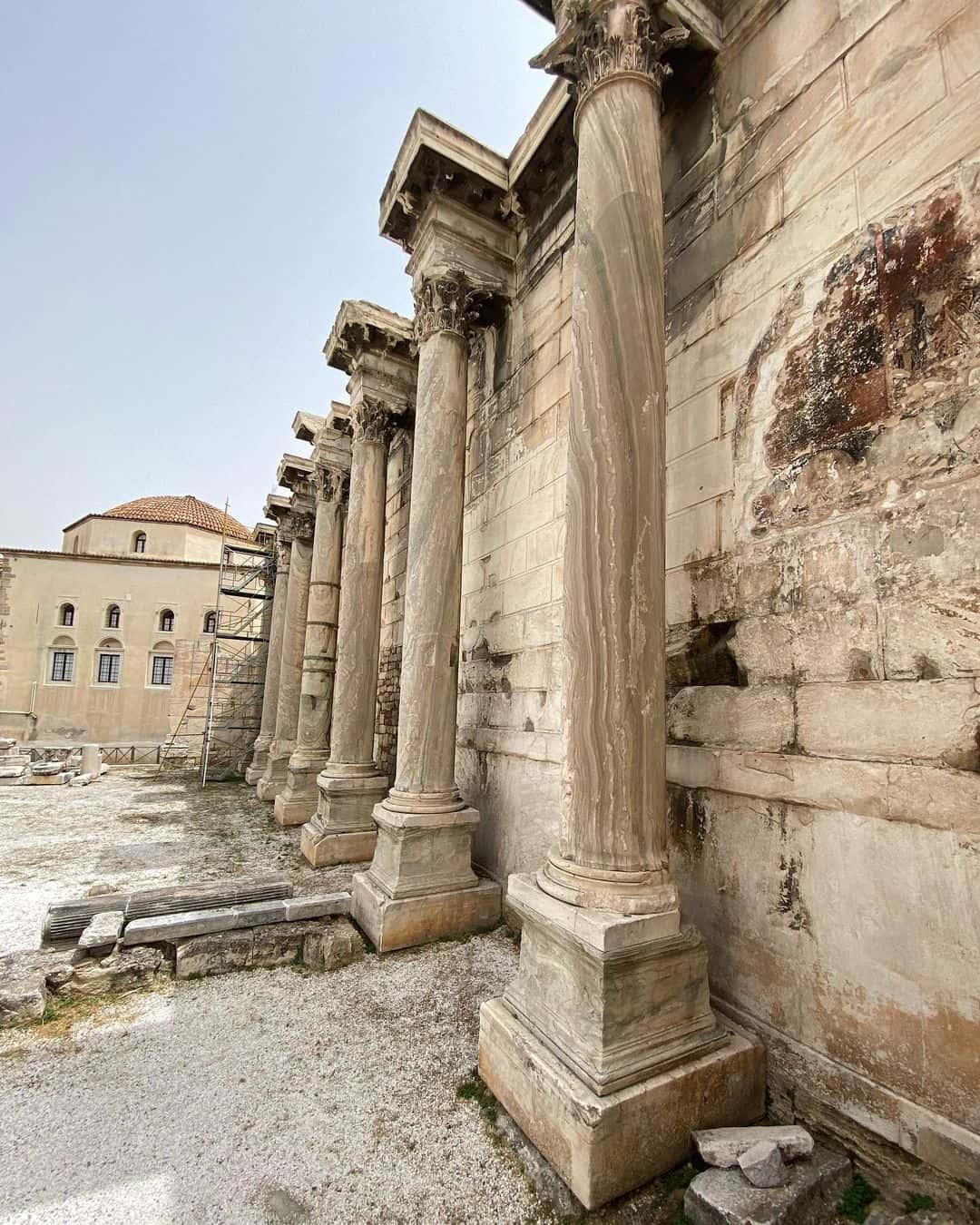
Athens is the largest of all the Greek cities. That makes sense considering it is the capital.
In 2021, Athens’ population was 3,153,255. That is significant when you consider that the population in the entirety of Greece is just 10 million.
The Athens urban area, including surrounding districts, covers 159 sq miles. By contrast, Thessaloniki, Greece’s second city, has a population of 814,000.
Athens was built near the sea due to maritime trade
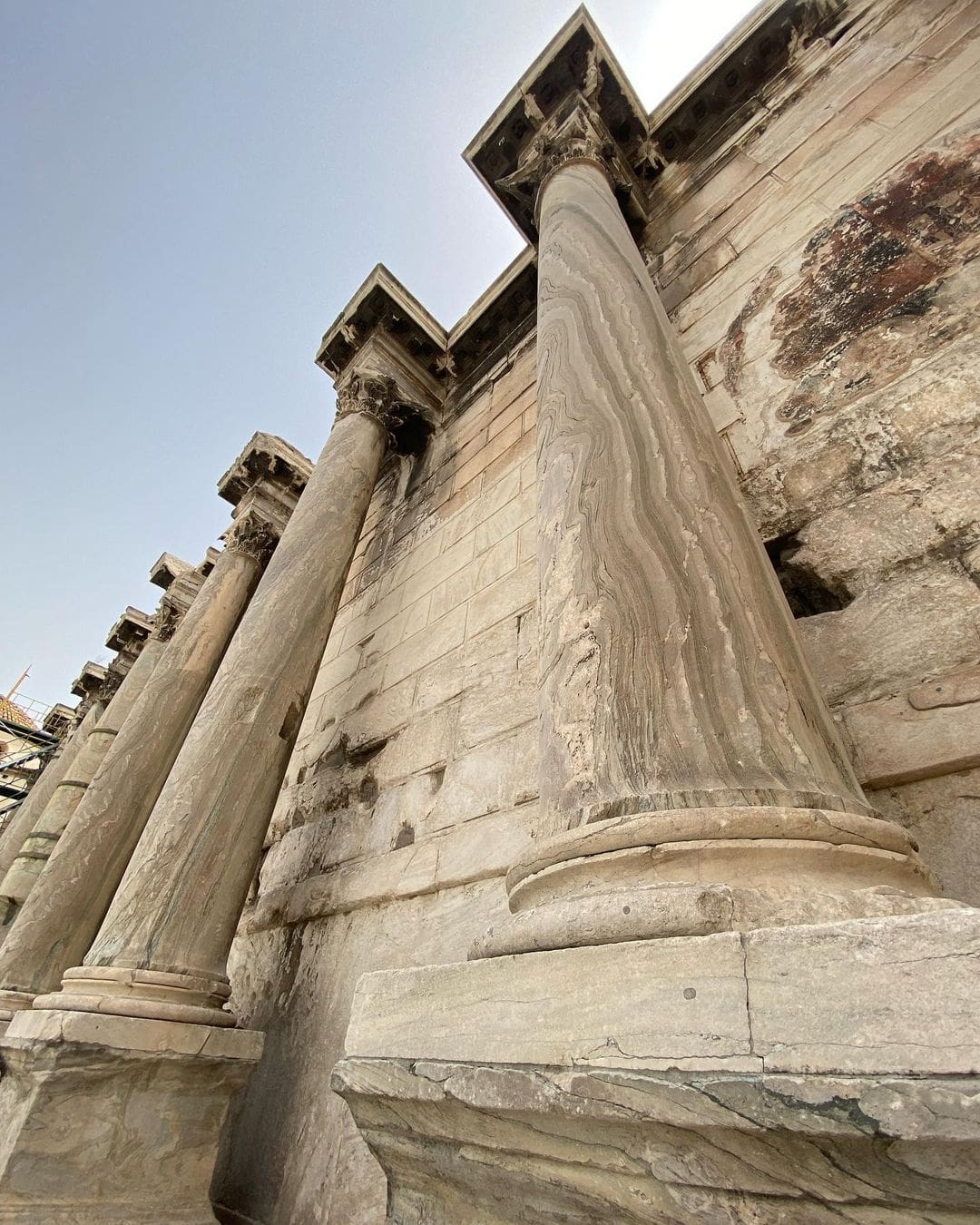
The city of Athens was built close to the sea to facilitate trade in the past, as commerce was mostly conducted by boat. This gave the city an advantage over Ancient Thebes and Sparta.
There are three major football clubs in Athens
Athens is home to several football clubs. However, only three of those are major teams. Namely, AEK Athens F.C., Olympiacos F.C. and Panathinaikos (PAO).
Olympiacos F.C is arguably the best team in Greece. They were founded in 1925 and have won the most titles and trophies.
Their Karaiskakis Stadium is actually slightly out of Athens, in Piraeus. If you are a fan of English football, the name Olympiacos may sound familiar. The team is owned by Evangelos Marinakis, the same person that owns Nottingham Forest FC.
Athens has beautiful beaches that would rival some islands
At first glance, Athens may seem like an ugly, chaotic megalopolis but it does have its places of beauty. The Athenian Riviera beach towns of Vouliagmeni, Vari, Voula, and Glyfada boast stunning coastlines and beach clubs.
There are plenty of beaches near Athens that can be reached within less than 30 minutes from the city centre. Many are free to enter, others require advanced reservations.
There are 9792 registered churches in Athens
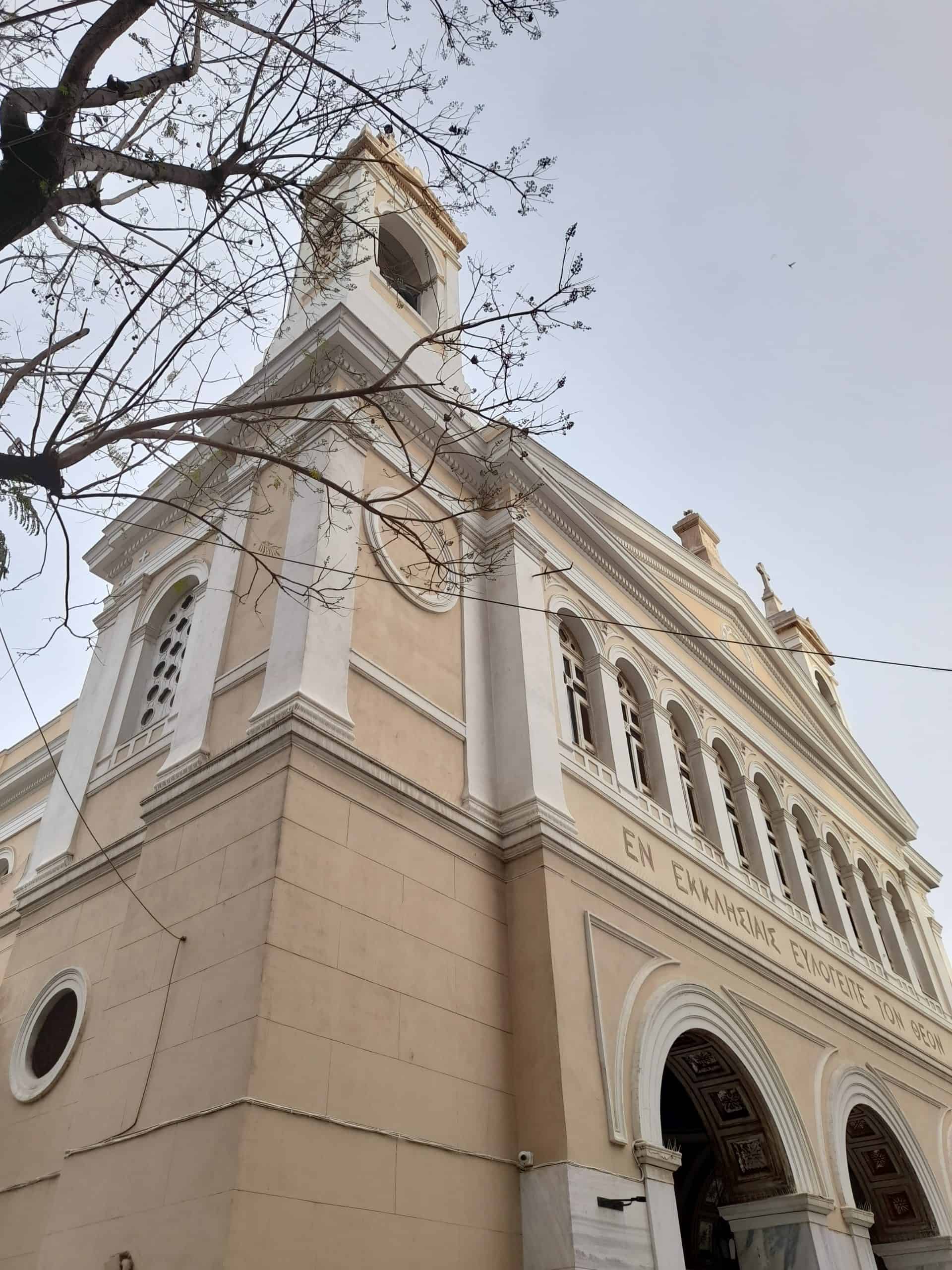
Most Greeks are religious and follow the Orthodox faith, although other religions do coexist here. According to a report by the General Secretariat of Religion, there are 9792 churches and monasteries in Athens alone.
Not all Athenian churches are created equal but many have been intricately designed and boast vibrant, colourful interior frescoes. The cathedral church of Athens sits in Mitropoleos square near Monastiraki.
It is the seat of the Archbishop of Greece and arguably the most important church in all of the country. It was designed by Theophil Hansen and construction took decades due to an initial lack of funding.
There are more than 100 museums in Athens
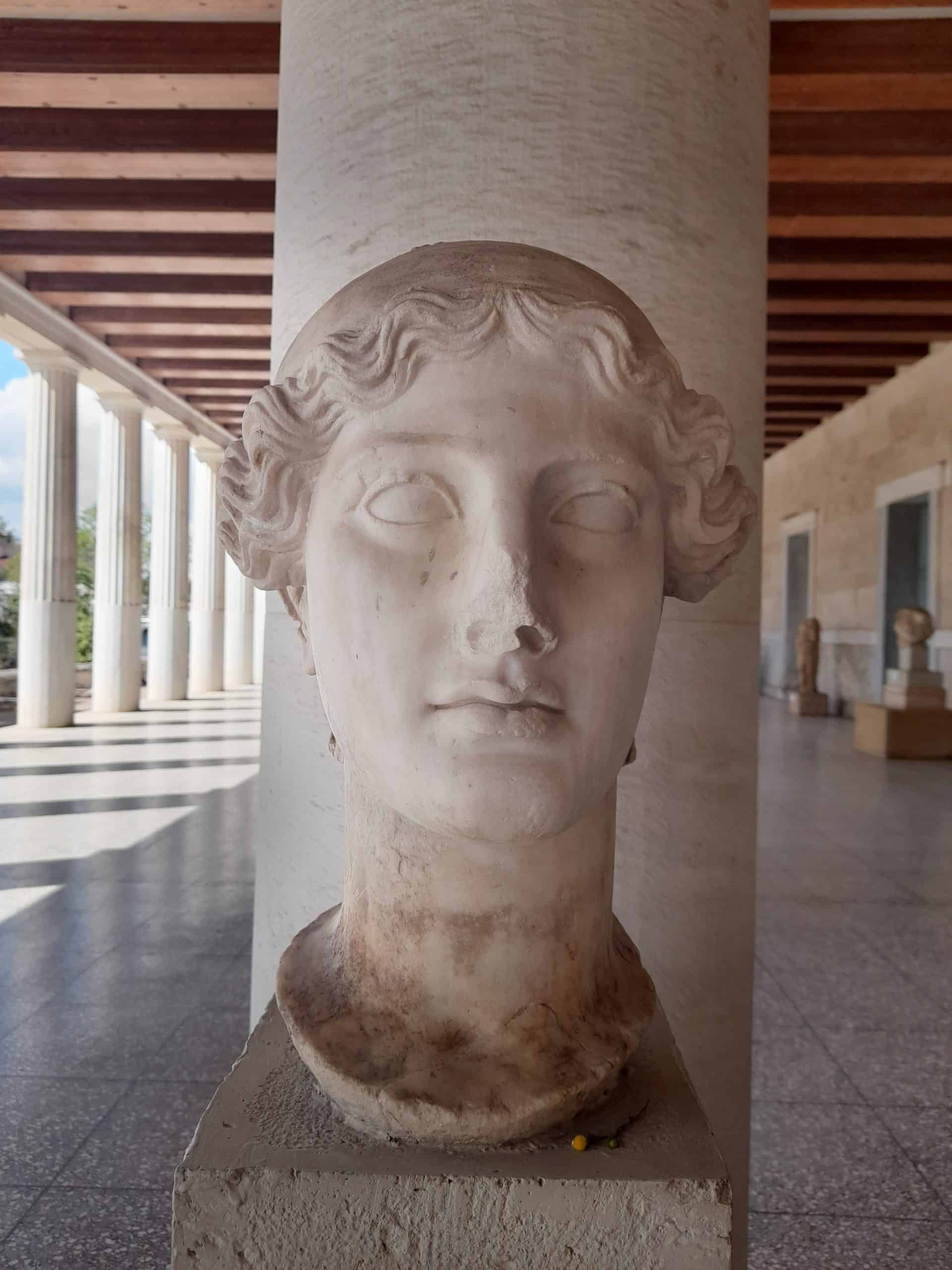
There are more than 100 Athenian museums, meaning that there is a little something for every interest! Athens museums range from the important and cultured, to the downright eccentric (like the Athens pinball museum!)
The “New” Acropolis museum is a must-visit. It helps you to put what you have seen at the Acropolis in context.
If you are short on time, you want to at least add the National Archaeological Museum, the Museum of the Ancient Agora (at the Stoa of Attalos) and the National Historical Museum to your radar. Museum entry is free on the first Sunday of the month from November to March.
Athens has more theatres than New York Broadway!
There are 152 theatre halls in Athens. That is significantly more than the New York broadway!
Areopagus hill was the judicial court of Athens
Areopagus Hill (Theorias 21) sits across from Filopappou Hill and is close to the majestic Acropolis. Today, it appears as little more than a rocky bluff and there are no ruins or remnants here that indicate its historic past.
In Ancient Greece, however, Areopagus served as the high court of appeal for judicial cases in ancient Greece. Today, you can climb up to the top to enjoy views over the Acropolis.
Areopagus sits within a small green park. It is pleasant to stroll through the west end of Athens on an early afternoon, clasping a warm cup of coffee.
You will see many Athenians and dog walkers doing the same. This is one of 8 major hills in Athens.
Facts about Athens Greece FAQs
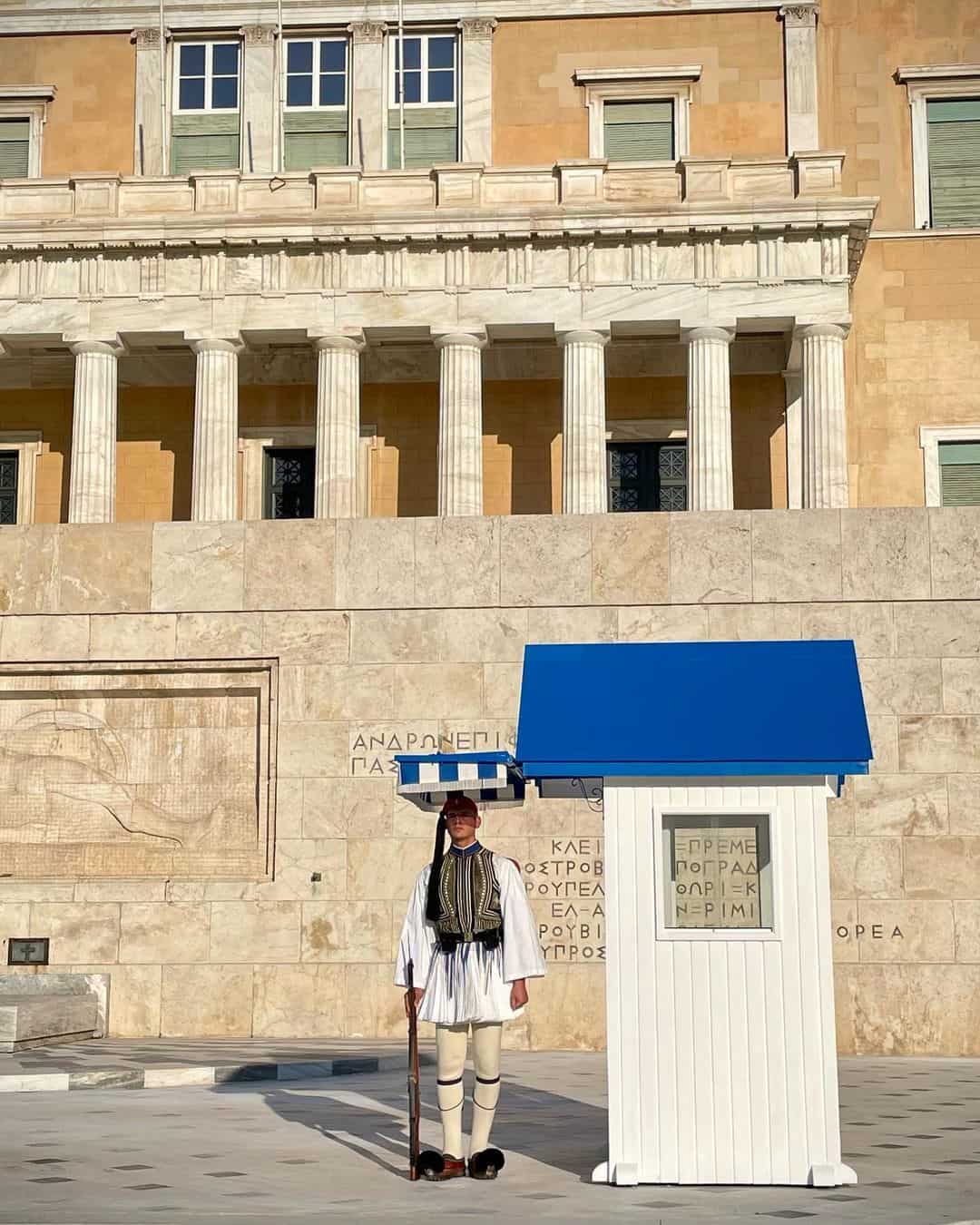
Do you have any burning questions about Athens Greece? Hopefully, you will find the answers you are seeking below!
What is Athens Greece known for?
Athens Greece is known for many things, but perhaps most notably, for being the capital of Greece and one of the oldest cities in Europe. The Acropolis and the Parthenon are one of the city’s most famous sites.
How old is Athens?
Athens is over 3,000 years old. It is one of the oldest cities in Europe.
What makes Athens a great city?
A combination of quaint neighbourhoods, fascinating ruins, interesting museums, and stunning hiking trails combine to make Athens a great travel destination. The city is perfect for a European weekend break.
Facts about Athens Greece: Parting Words
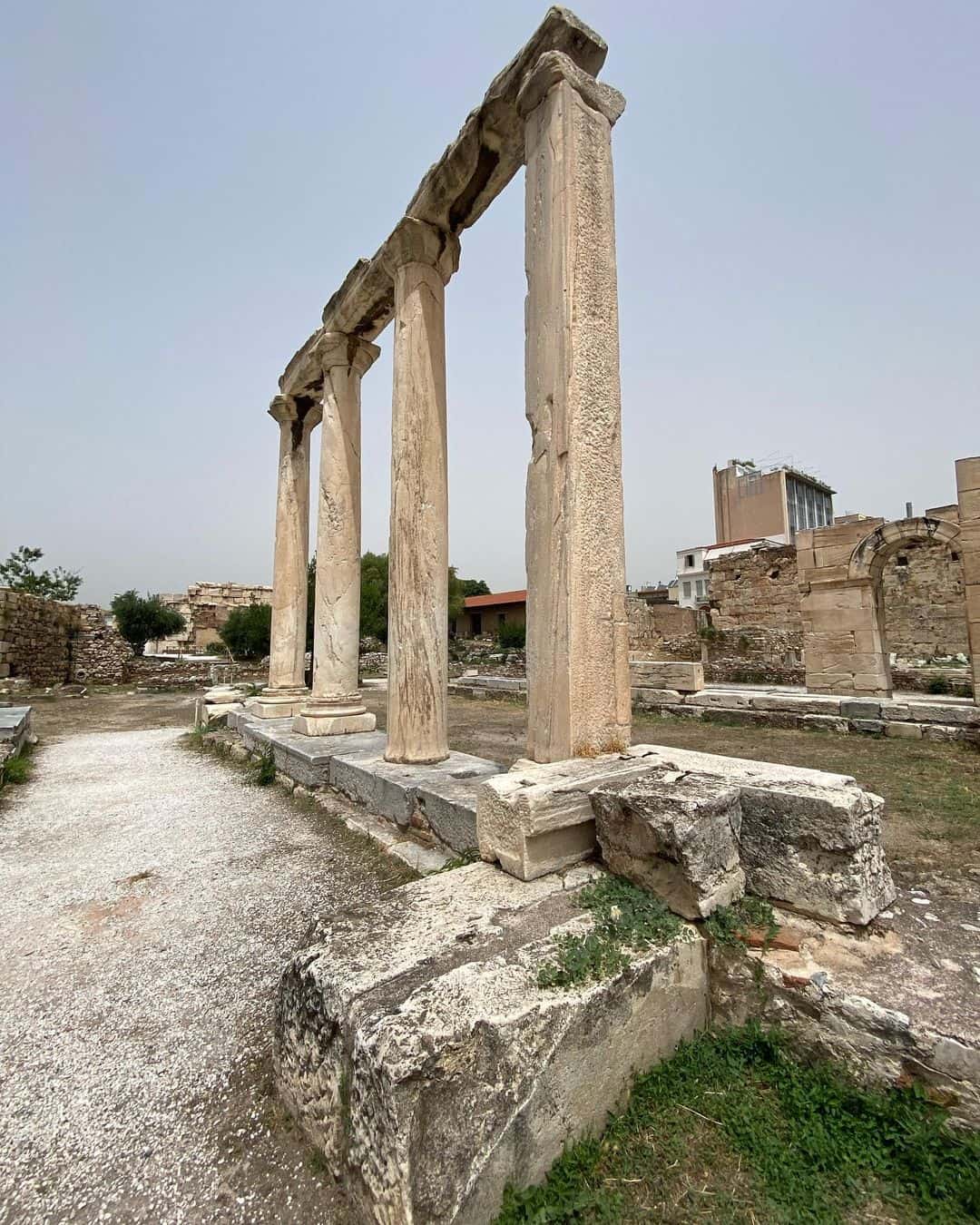
Athens, Greece is a city rich in history and culture, with fun facts that make it stand out. Once a powerful city-state, it was the birthplace of Pheidippides’ legendary run from Marathon to Athens, symbolizing prowess and endurance.
Athens’ historical significance was acknowledged when it was named the European Capital of Culture, a testament to its enduring influence. These elements collectively showcase Athens as not just a city but a cornerstone of cultural and historical importance.
If you enjoyed reading these facts about Athens, perhaps you will also enjoy reading these facts about Greece. Alternatively, maybe you are interested to know what Greece is famous for.
Have you been to Greece before? What did you think? I have been living in Athens for almost 5 years now.
Have a wonderful time travelling here! Geia sou!

